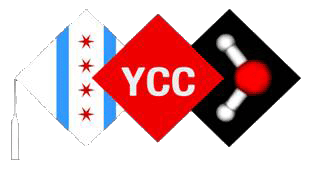


Chicago YCC Table at Local Section Meeting
Thursday, November 17, 2011
5:30 - 6:15 · Pre-Dinner Talk
5:30 - 6:30 PM · Social Hour
6:30 - 7:30 PM · Dinner
7:30 PM · General Meeting
The Parthenon Restaurant
314 Halsted St
Chicago, IL 60661
Parking: Free valet parking, or local lots and street parking available.
Also accessible by CTA (blue line UIC-Halsted).
Come sit with other Young Chemists at the Chicago ACS Local Section November meeting.
Register for the meeting with the local section: PAY Local Section!
Dinner reservations are required and should be received in the Section Office via phone (847-391-9091), email (chicagoacs@ameritech.net), or web by noon November 14th . PLEASE HONOR YOUR RESERVATIONS. The Section must pay for all food orders. No-shows will be billed. Seating will be available for those who wish to attend only the meeting.
Check out the Chicago ACS page about the meeting (coming soon) only some details below:
Cost: $30.00 for members of ACS and their guests, $32.00 for non-members, and $15 for students, retired, or unemployed
Dinner: Soup of the day, Garden salad with choice of dressing, Entrées (choose one): chicken marsala, broiled salmon “Oreganata”, pasta with vegetables with baked potato & baby carrots, Ice cream for dessert
Speaker:
| Robin L. Garrell |
 |
UCLA |
|
“Nanotechnology in Art and Art Conservation”Nanotechnology, the development of materials and devices on the nanometer scale, is promoted as an innovative solution to many of today’s societal and technical challenges. In fact, nanoscale materials have been fabricated and used since ancient times. Among the most beautiful examples are metal nanoparticle-infused Roman glasses, medieval stained glass windows and lusterware-glazed ceramics. The same optical phenomenon that confers beauty to these objects now enables art conservators to analyze coatings, paints and other art materials on museum objects using surface-enhanced Raman spectroscopy. Conservation scientists use other types of nanoscale materials to restore and preserve cultural treasures. For example, nanoemulsions and ceramics were used to restore the Assisi frescoes that were damaged by a powerful earthquake in 1997. To complete our tour of nanoscale materials in art and art conservation, we’ll see how new materials such as polyaniline nanofibers are being evaluated for their potential to slow or prevent the corrosion of ancient metal artifacts and modern sculptures. |
|